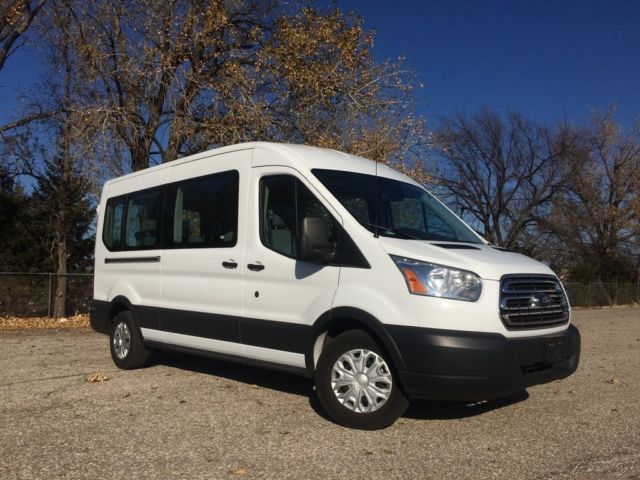
Perhaps the most prominent example is the 2016 Ford Transit Van, an impressive vehicle that enters its second year of production as the all-around champ in this segment. However, it's not that spacious when used as a seat – shoulder and hip space is very tight for all three occupants across the cabin.The large cargo van market has been evolving for some years now as a new generation of maneuverable, fuel-efficient models replaces the trucklike old guard. The Transit Connect has a flexible dual passenger seat option, with the middle seat able to flip up to provide extra storage or fold down to create a writing desk. Storage in the cab is good too, with the large overhead shelf combining with door pockets, a glovebox, a central storage area between the seats and a handy lidded cubby above the dials to provide plenty of options for keeping the cab tidy. Build quality is sturdy throughout, with tough, durable plastics favoured over fancy trim finishes that may not stand the test of time. The cluster of buttons on the original Transit Connect has been replaced by a touchscreen on higher spec facelifted models.

The steering wheel is compact and feels good in your hands with well-positioned controls mounted on it. Much of the switchgear will be familiar to Ford Fiesta and Focus passenger car owners, and the chunky, angular design theme is carried over from the exterior. Inside the Transit Connect is a roomy two-seater cabin with an abundance of headroom and some clever storage options. Adding an auto box bumps the price by around £1,200. Those two are around £1,600 and £1,700 more than Limited trim, while going for L2 over the L1 body is around £1,500 extra. Limited trim starts from around £20,000, chiefly because it's only offered with the high-power 1.5 EcoBlue 120 diesel, as are Sport and Active trims. Trend trim is around £800 more than Leader, and you can spec all four engines in both trims. Prices for the Transit Connect start from less than £17,000, with the longer L2 body adding around £1,200 to the list price. Service intervals for the van are every year or 20,000 miles.
#2016 ford 12 passenger van mpg drivers#
And in case drivers spend so long away from the pumps that they forget which fuel to put in, Ford’s Easy-Fuel anti-misfuelling filler cap is standard. Options such as speed limiters (at 50, 62 and 70mph) and acceleration control are available to help fleet users save money on fuel, too. All Transit Connect models get the same 60-litre fuel tank, giving a long range between fill-ups. While Ford used to offer the option of a Fuel Economy pack and a lean Transit Connect ECOnetic model, stop-start is now standard with every engine. Few van buyers will be tempted away from diesel, but for light-duty urban work, the tiny turbo petrol can make sense. All vans are front-wheel drive, although you can add a mechanical limited-slip diff and all-season tyres to all models if you need a bit more traction.
#2016 ford 12 passenger van mpg manual#
If you don't want diesel, then Ford’s 1.0 EcoBoost 100PS turbo petrol is available with a six-speed manual gearbox, although it's only available in more basic trims. All versions come with a six-speed manual, while the 100 and 120 versions can both be had with an eight-speed auto. In the engine bay, the Ford Transit Connect uses Ford's latest Euro 6-compliant 1.5 EcoBlue diesel in 75PS, 100PS and 120PS guises.

It's fully glazed, comes with five or seven seats and has a more car-like interior, with carpets throughout and additional soundproofing. If passenger carrying is your priority, then the Tourneo Connect is the dedicated passenger version of the Transit Connect. The Double Cab In-Van variant has a second row of seats and can carry five people, although it still has solid steel side doors (fixed glazing is available as an option), while a movable steel mesh bulkhead is standard. This can be upgraded to a dual seat with a through loading facility, although the two-passenger seat layout is cramped for all on board. All Transit Connects feature a slimline steel bulkhead, while two seats are found in the cabin. All vans get a single sliding side door on the nearside (a second door is available as an option), while at the back are a pair of barn doors with a 50:50 split. Like most vans in this class, the Transit Connect comes as a panel van in L1 and L2 lengths, but there's just a single roof height. New MS-RT Ford Transit Connect 2019 review.


 0 kommentar(er)
0 kommentar(er)
